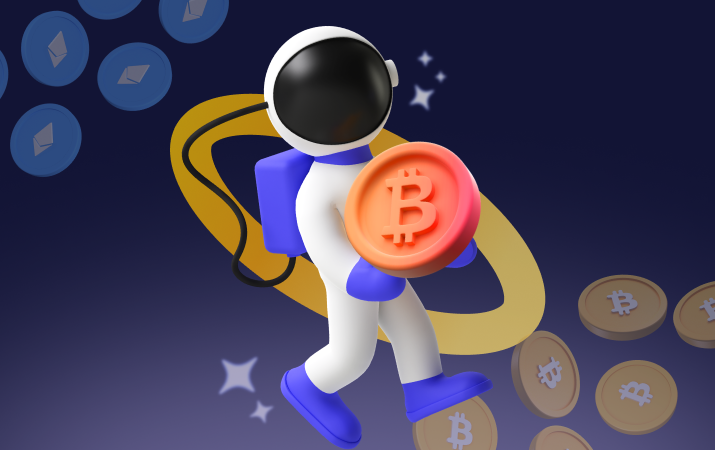In the world of blockchains, there is a trilemma between scalability, decentralization and network security. Every Level 1 blockchain tries to add its own little grain of salt to solve this problem and become the reference blockchain in the Web 3 world. Massa presents itself as the most decentralized blockchain of all. In this article, we take a look at the technology it uses to claim this position.
The story behind Massa blockchain
Launched in 2021 and currently in the testnet phase, the project behind Massa, however, goes back much further. Back in 2017, the research project was launched by three French researchers. Longtime friends Sébastien Forestier, Damir Vodénicarevic and Adrien Laversanne-Finot wanted to embark on a crazy project: To create the most decentralized blockchain in the crypto ecosystem!
The background of the three researchers
Sébastien, the CEO, has a PhD in artificial intelligence and has carried out research on robotics in teams at L'Inria after passing through ENS.
Damir is in charge of development and technology in the team, and holds a PhD in theoretical physics. He also won a gold medal in the IGEM competition in 2013 for scientific research using genetically modified bacteria.
As for Adrien, he is in charge of the company's strategy.
These three entrepreneurs first raised 5 million euros in a private sale. The private sale was ultra-decentralized, involving over 100 different people. This helped to avoid a monopoly.
The team currently consists of 15 employees, not counting their Massa ambassador program (Masstronauts and Mascots), which should extend their power of influence in the crypto world. What's more, the ease with which anyone can spin a node makes blockchain accessible to all.
The technology behind Massa labs blockchain
Launched in 2021 and currently in its testnet phase. Massa blockchain is a new layer 1 blockchain that aims to enable anyone to run a node, with a minimum of hardware.
testnet blockchain massa
The Massa blockchain's first innovation is its autonomous smart contracts. These live freely on the massa blockchain and can self-activate, with an autonomous flow to use them. They have the ability not only to feed off the blockchain's data, but also to request information from external sources without the need for additional interaction.
Thanks to autonomous smart contracts, layer 1 reduces the need for bots or human interaction, further reducing centralization. Pushing back the limits of decentralization. What's more, Massa's innovative technology enables data to be stored and accessed autonomously by smart contracts. To date, no other blockchain is capable of this kind of smarts contract.
Of course, many other blockchains use centralized robots, but the centralized nature of this approach presents risks, particularly in the event of option liquidation.
The novel concept behind Massa DAGs
diagram of the massa blockchain's revolutionary DAG technology
DAGs, or Directed Acyclic Graphs, are a mathematical and computational construct that enable the creation of distributed systems and networks with many functional similarities to those proposed by blockchain technology. As you will have gathered, there is no blockchain as such in a DAG, only nodes that enable users to validate that the rules of the network and its intelligent contacts have been respected.
Each transaction therefore corresponds to a node. The advantage of this over the tree structure of blockchains is that data processing is much faster. This technology uses the shortest path to solve the problem. The massa blockchain incorporates its own variant of DAG, with a skeleton called blockclique. This novel multichain system enables 32 chains to operate in parallel, depending on the needs of the network.
According to the project's white paper, this architecture enables multiple blocks to be created and validated in parallel. And that's not all: the proof-of-stake blockchain protocol is also resistant to Sybil-type attacks.
What are Sybil attacks? A Sybil attack is based primarily on gaining undue influence over decisions made on the network. To do this, the hacker needs to control a number of pseudonyms that enable him to exert this influence. As a result, the hacker gains far too much control over decisions made on the network.
Finally, the Massa blockchain has created a token dedicated to the community, giving total control over governance. To better understand how the creators of the Massa crypto came to create this blockchain. We need to go back a little further.
Decentralization at the heart of the project
As explained above, Massa's goal is to become the most decentralized blockchain in the ecosystem. As Damir says: "A blockchain can be seen as a bad, slow and expensive database. One of its major contributions is decentralization. To move away from this attribute is to lose sight of its first asset".
To achieve this objective, the team naturally turned to POS (proof of stake), since it has the advantage of not creating an economy of scale due to the use of mining hardware. Mining is becoming increasingly centralized. The least advantaged miners end up unplugging their equipment for lack of profitability.
However, there is a problem with proof of stake. Accessibility to hardware capable of running a node. And the amount of money needed to stack up in order to become a validator. A small number of validators means that a large part of security is left out.
For this reason, the project is very cautious about distributing the massa crypto. According to the official website, no single entity will be able to acquire more than 1% of the supply.
What's more, we already know that during the fund-raising phase, the distribution was carried out with over 100 people, including 18 countries. Finally, the team itself will only take a very small share of the tokens, with a vesting period of several years.
In conclusion, I'd say that Massa blockchain is a new layer 1 that has solid foundations and is keen to re-emphasize the basis of why blockchain was created: decentralization. In particular, by setting up a system that allows anyone to run a Massa node. With a minimum of hardware (laptop).







